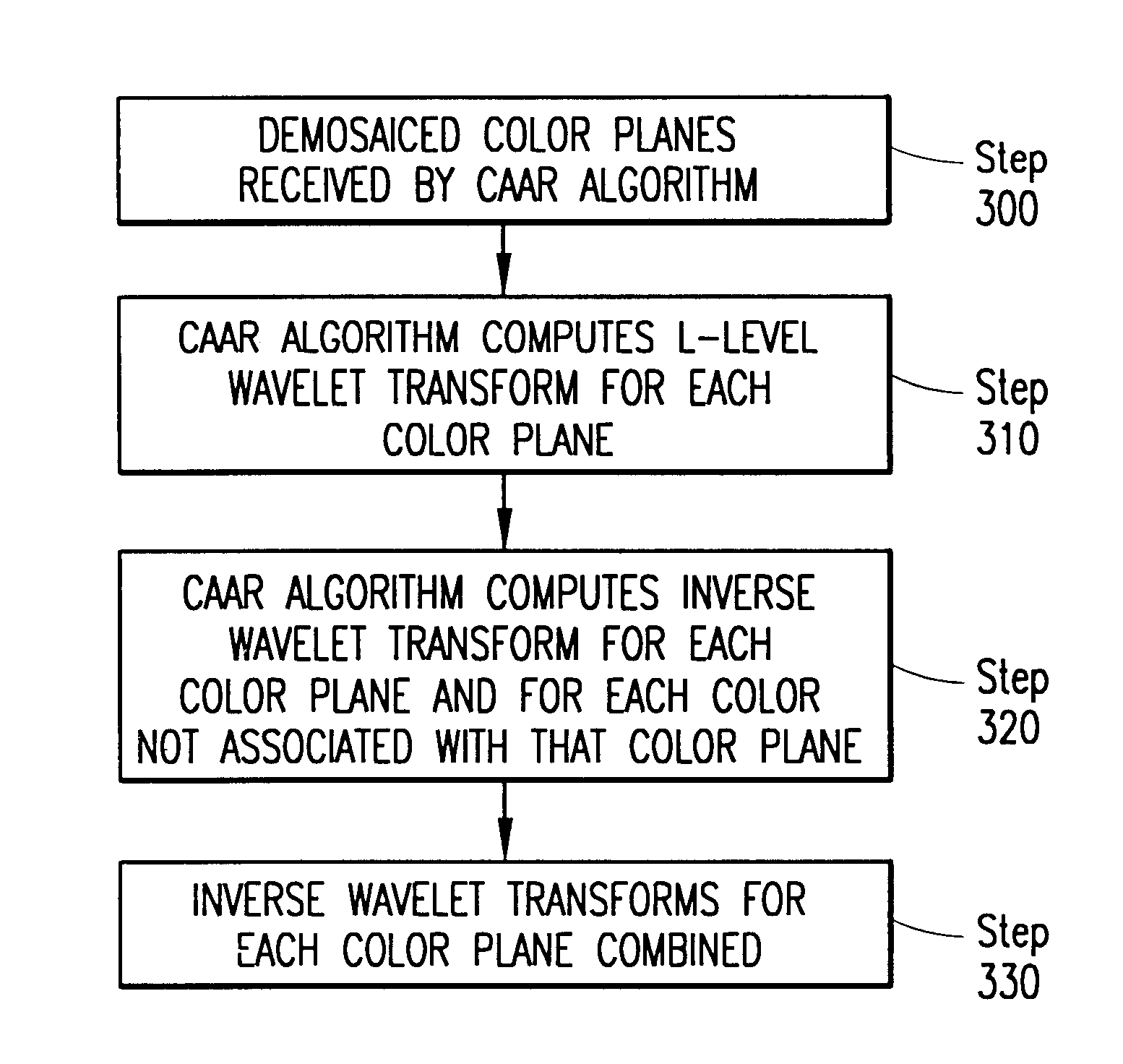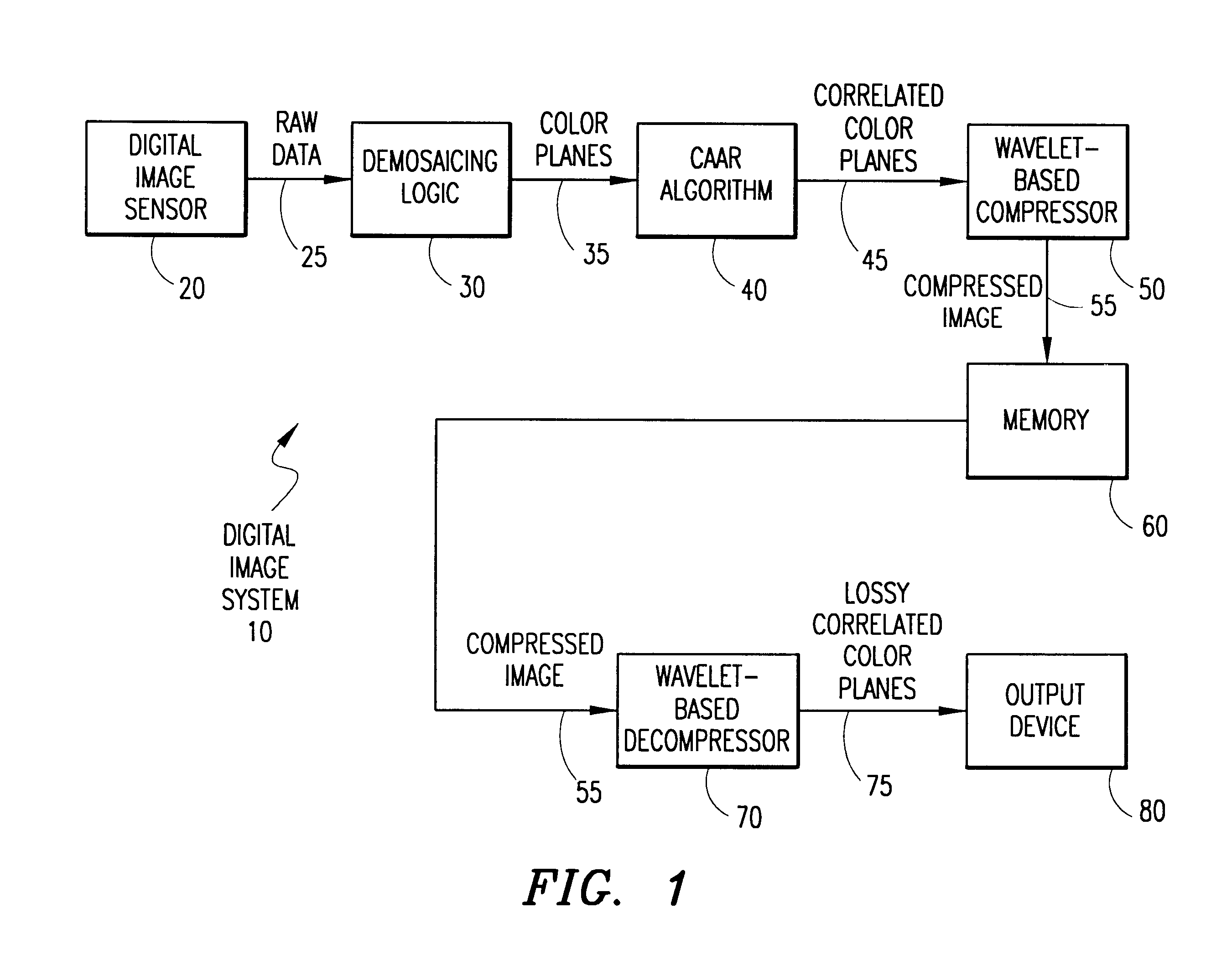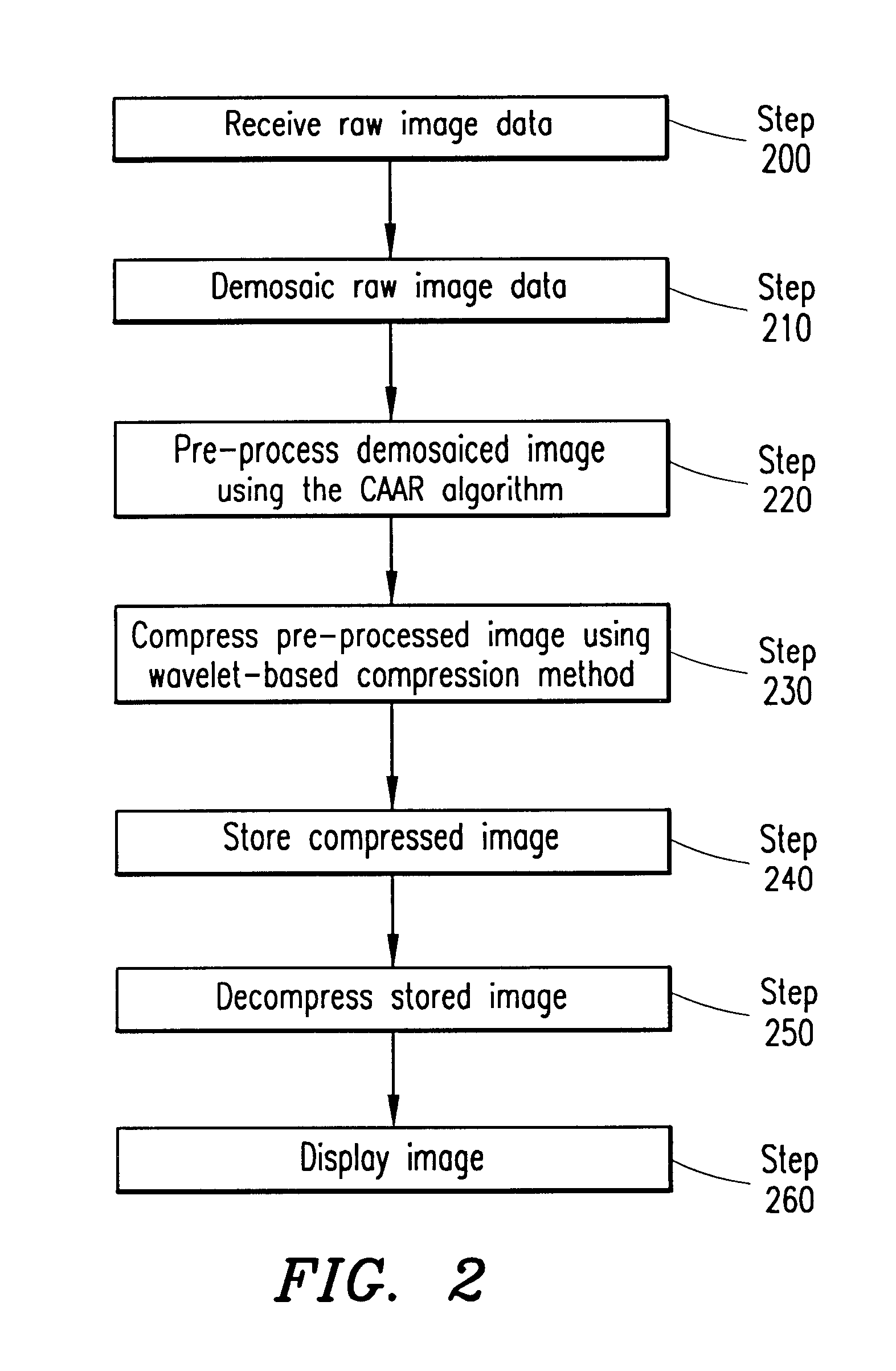System and method for processing demosaiced images to reduce color aliasing artifacts
a demosaiced image and artifact technology, applied in the field of digital image processing, can solve the problems of inconvenient use of discrete cosine transform color aliasing reduction methods and wavelet-based compression, and the frequency of color aliasing artifacts in demosaiced images
- Summary
- Abstract
- Description
- Claims
- Application Information
AI Technical Summary
Problems solved by technology
Method used
Image
Examples
Embodiment Construction
The numerous innovative teachings of the present application will be described with particular reference to exemplary embodiments. However, it should be understood that these embodiments provide only a few examples of the many advantageous uses of the innovative teachings herein. In general, statements made in the specification of the present application do not necessarily delimit any of the various claimed inventions. Moreover, some statements may apply to some inventive features, but not to others.
FIG. 1 shows a digital image system 10 implementing the color aliasing artifact reduction (CAAR) algorithm 40 in accordance with the present invention. The digital image system 10 can be any digital imaging device, such as a digital camera, video camera, medical imaging device, etc. The digital image system 10 can also be a computer system, such as a personal computer or server, having a memory therein for storing compressed image data. The CAAR algorithm 40 can be a part of an image pro...
PUM
 Login to View More
Login to View More Abstract
Description
Claims
Application Information
 Login to View More
Login to View More - R&D
- Intellectual Property
- Life Sciences
- Materials
- Tech Scout
- Unparalleled Data Quality
- Higher Quality Content
- 60% Fewer Hallucinations
Browse by: Latest US Patents, China's latest patents, Technical Efficacy Thesaurus, Application Domain, Technology Topic, Popular Technical Reports.
© 2025 PatSnap. All rights reserved.Legal|Privacy policy|Modern Slavery Act Transparency Statement|Sitemap|About US| Contact US: help@patsnap.com



